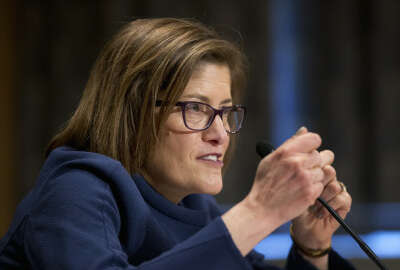
Hispanic council pondering new executive order to improve diverse hiring and retention
OPM's Hispanic Council is considering whether a new executive order would put more pressure on the president and cabinet agencies to improve diverse recruitment and...
The Hispanic Council on Federal Employment wants to draft a new executive order to put more pressure on both the president and cabinet agencies to devote more attention on Latino recruitment and retention.
The council’s discussions come ahead of the Office of Personnel Management’s upcoming release of its annual report on Hispanic federal employment. The report will show that Hispanics represented 8.6 percent of the federal workforce in fiscal 2016, acting OPM Director Kathleen McGettigan said during Tuesday’s Hispanic Employment Council meeting.
The report has been submitted to the president and will be available soon, she added.
This is the sixth consecutive year agencies have made modest increases in Hispanic representation within the permanent federal workforce. Latinos represented 8.5 percent of the workforce in fiscal 2015 and 8.4 percent during the previous year.
2016’s report will be the 16th year that OPM has issued a report on Hispanic hiring and employment in the federal workforce. In 2000, Hispanic permanent federal civilian employees represented 6.5 percent of the workforce. Since 2000, that percentage has incrementally increased — the largest increase being 0.3 percent between 2006 and 2007 — though the percentage remained flat at 8.0 percent in 2009 and 2010.
The 0.1 percent bump every year has been frustrating for Hector Sanchez, co-chairmain of the Hispanic Council on Federal Employment, who encouraged members of the council to think more about long-term goals rather than year-to-year results.
“Even though OPM usually presents the numbers in a positive way — and they’re positive — we need a deeper analysis,” he said. “If we continue to grow the [number] of Latinos in the federal government at such a small pace, we’re never going to close the gap. The Latino community is growing at a faster rate, so we need to really see it from that perspective.”
Sanchez said he wants the council to find “structural ways to put pressure on changing the system.” An executive order, he said, would draw needed attention on the topic.
“In many meetings that I had with high-level officials, the message is the same,” he said. “There is not a strong message from the highest authority that this is a top priority. There is very little that can be done, unless you have a very good leader in your agency that is fully committed to creating changes, it is going to be very hard to change the practices of the federal government.”
The council nearly 10 years ago explored the possibility of either revising past executive orders on Hispanic hiring or writing a completely new one. At the time, it voted to rewrite a new order, but the topic fell off the council’s agenda.
“It’s a good move, but that alone is not going to help,” Dave Williams, director of the Veterans Affairs Department’s Office of Workforce Planning and Analysis, said of a possible executive order. “The issue of accountability has to be addressed at the same time. We have to hold those leaders accountable to executing the executive order, whatever that may be, to the point where we actually measure them and their accomplishments to achieve whatever the goals may be outlined in the executive order. Without accountability, it’s just going to be another paper shuffle.”
President Bill Clinton last signed an executive order on Hispanic federal employment toward the end of his administration.
OPM and the council had discussions with President Barack Obama on the topic, but Sanchez said those conversations happened too late in his administration.
OPM in January directed agencies to identify barriers to Hispanic employment in government and develop solutions to eliminate those roadblocks. Specifically, OPM’s memo asked agencies to analyze Hispanic representation at each stage of the federal recruitment and hiring process. Generally, an “applicant flow analysis” will show agencies whether Hispanic applicants are applying and qualifying for federal jobs — and whether those applicants are actually receiving interviews and getting selected.
Different agencies see different results. The Commerce Department has different challenges with the recruitment and hiring process than, for example, the Veterans Affairs Department.
“It’s been my experience talking to my colleagues that it’s not necessarily in the applicant phase,” said Tinisha Agramonte, director of the Office of Civil Rights, at Commerce. “Hispanics are applying at rates we would expect, [and] they’re qualifying at rates we would expect. They’re not being selected at rates we would expect.”
Agencies’ reports on the topic are due to the Equal Employment Opportunity by Jan. 31, 2018.
Zina Sutch, director of OPM’s Office of Diversity and Inclusion, said the council would wait until agencies finish their reports before drafting an executive order on Hispanic hiring.
Copyright © 2025 Federal News Network. All rights reserved. This website is not intended for users located within the European Economic Area.
Nicole Ogrysko is a reporter for Federal News Network focusing on the federal workforce and federal pay and benefits.
Follow @nogryskoWFED





